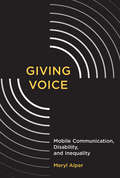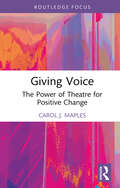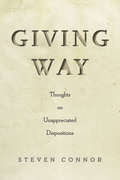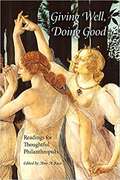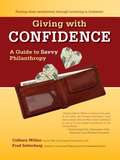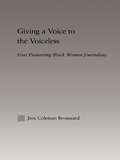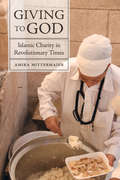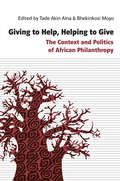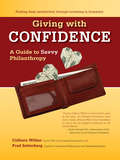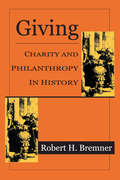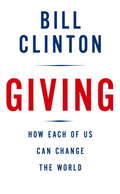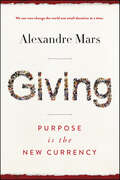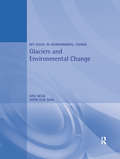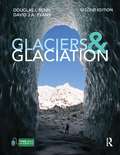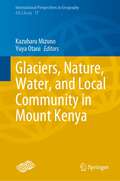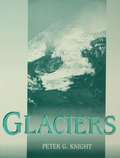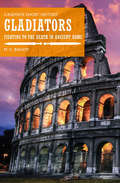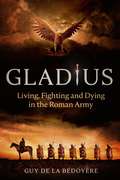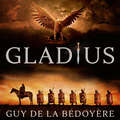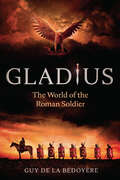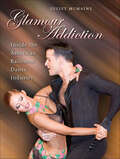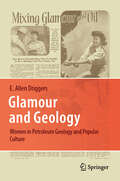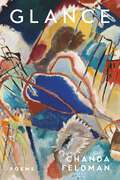- Table View
- List View
Giving Voice: Mobile Communication, Disability, and Inequality
by Meryl AlperMobile technologies are often hailed as a way to "give voice to the voiceless." Behind the praise, though, are beliefs about technology as a gateway to opportunity and voice as a metaphor for agency and self-representation. In Giving Voice, Meryl Alper explores these assumptions by looking closely at one such case -- the use of the Apple iPad and mobile app Proloquo2Go, which converts icons and text into synthetic speech, by children with disabilities (including autism and cerebral palsy) and their families. She finds that despite claims to empowerment, the hardware and software are still subject to disempowering structural inequalities. Views of technology as a great equalizer, she illustrates, rarely account for all the ways that culture, law, policy, and even technology itself can reinforce disparity, particularly for those with disabilities. Alper explores, among other things, alternative understandings of voice, the surprising sociotechnical importance of the iPad case, and convergences and divergences in the lives of parents across class. She shows that working-class and low-income parents understand the app and other communication technologies differently from upper- and middle-class parents, and that the institutional ecosystem reflects a bias toward those more privileged. Handing someone a talking tablet computer does not in itself give that person a voice. Alper finds that the ability to mobilize social, economic, and cultural capital shapes the extent to which individuals can not only speak but be heard.
Giving Voice: Mobile Communication, Disability, and Inequality (Digital Media and Learning)
by Meryl AlperHow communication technologies meant to empower people with speech disorders—to give voice to the voiceless—are still subject to disempowering structural inequalities. Mobile technologies are often hailed as a way to “give voice to the voiceless.” Behind the praise, though, are beliefs about technology as a gateway to opportunity and voice as a metaphor for agency and self-representation. In Giving Voice, Meryl Alper explores these assumptions by looking closely at one such case—the use of the Apple iPad and mobile app Proloquo2Go, which converts icons and text into synthetic speech, by children with disabilities (including autism and cerebral palsy) and their families. She finds that despite claims to empowerment, the hardware and software are still subject to disempowering structural inequalities. Views of technology as a great equalizer, she illustrates, rarely account for all the ways that culture, law, policy, and even technology itself can reinforce disparity, particularly for those with disabilities. Alper explores, among other things, alternative understandings of voice, the surprising sociotechnical importance of the iPad case, and convergences and divergences in the lives of parents across class. She shows that working-class and low-income parents understand the app and other communication technologies differently from upper- and middle-class parents, and that the institutional ecosystem reflects a bias toward those more privileged.Handing someone a talking tablet computer does not in itself give that person a voice. Alper finds that the ability to mobilize social, economic, and cultural capital shapes the extent to which individuals can not only speak but be heard.
Giving Voice: The Power of Theatre for Positive Change (ISSN)
by Carol J. MaplesThis book is a practical guide for using the power of theatre to address issues of oppression in areas such as race, ethnicity, LGBTQ+, gender, and sexual harassment.Giving Voice charts a roadmap for the process of establishing a troupe, including auditioning members, utilizing authentic source material, directing rehearsals, guiding mindful growth among troupe members, and facilitating an inclusive forum environment. Rooted in Augusto Boal’s Theatre of the Opressed and using the nationally recognized Missouri State University’s Giving Voice troupe as a model, this book provides guidance for customizing the program’s principles to meet the needs of your school, community, organization, or business. Giving Voice forums bring professional development to a new level. Applications include diversity and cultural awareness training in educational settings for students, staff, faculty, and administrators, as well as those in non-profit and for-profit organizations.This book provides a powerful and proven approach to creating a truly inclusive climate. It is a guidebook for accessible use in the secondary and university setting in theatre and performance studies. It has also been shown to be effective for businesses and other organizations.
Giving Way: Thoughts on Unappreciated Dispositions
by Steven ConnorIn a world that promotes assertion, agency, and empowerment, this book challenges us to revalue a range of actions and attitudes that have come to be disregarded or dismissed as merely passive. Mercy, resignation, politeness, restraint, gratitude, abstinence, losing well, apologizing, taking care: today, such behaviors are associated with negativity or lack. But the capacity to give way is better understood as positive action, at once intricate and demanding. Moving from intra-human common courtesies, to human-animal relations, to the global civility of human-inhuman ecological awareness, the book's argument unfolds on progressively larger scales. In reminding us of the existential threat our drives pose to our own survival, Steven Connor does not merely champion a family of behaviors; he shows that we are more adept practitioners of them than we realize. At a time when it is on the wane, Giving Way offers a powerful defense of civility, the versatile human capacity to deflect aggression into sociability and to exercise power over power itself.
Giving Well, Doing Good: Readings For Thoughtful Philanthropists
by Amy A. KassThis anthology explores the enterprise of philanthropy―assumptions, aspirations, and achievements. It brings together key texts that can provide guidance to current and prospective donors, trustees and professional staff of foundations, and leaders of nonprofit organizations. Organized thematically, these texts seek to illuminate fundamental questions about the idea and practice of philanthropy, to promote more thoughtful discussion about practical issues facing the philanthropic sector, and to point a way toward a philanthropic practice that is more responsible, more effective, and more civic-spirited. Amy A. Kass has selected readings from sources that range from the classics to the contemporary, from foundational statements on philanthropy to reflections on key issues of novelists and poets. Each illuminates some aspect of philanthropy. The book is arranged according to themes: goals and intentions; gifts, donors, and recipients; grants, grantors, grantees; bequests and legacies; effectiveness; accountability; and leadership.
Giving With Confidence: A Guide To Savvy Philanthropy
by Colburn S. Wilbur Fred SetterbergThere are thousands of books that tell you how to get money, but few that cover something just as challenging: how to give money away. Giving with Confidence provides thoughtful guidance culled from decades of experience in the philanthropy world. Whether you are an individual who donates to your favorite charity or the head of a large foundation, the gentle practicalities of this book will enable you to manage your giving with effectiveness and personal satisfaction. By following its seven core principles, you will have what you need for ''improving the reach, scope, and impact'' of your contributions.
Giving a Voice to the Voiceless: Four Pioneering Black Women Journalists (Studies In African American History And Culture Ser.)
by Jinx Coleman BroussardThis work describes the journalism careers of four black women within the context of the period in which they lived and worked. Ida B. Wells-Barnett, Mary Church Terrell, Alice Dunbar-Nelson and Amy Jacques Garvey were among a group of approximately twenty black women journalists who wrote for newspapers, magazines and other media during the late n
Giving to God: Islamic Charity in Revolutionary Times
by Amira MittermaierGiving to God examines the everyday practices of Islamic giving in post-revolutionary Egypt. From foods prepared in Sufi soup kitchens, to meals distributed by pious volunteers in slums, to almsgiving, these acts are ultimately about giving to God by giving to the poor. Surprisingly, many who practice such giving say that they do not care about the poor, instead framing their actions within a unique non-compassionate ethics of giving. At first, this form of giving may appear deeply selfish, but further consideration reveals that it avoids many of the problems associated with the idea of “charity.” Using the Egyptian uprising in 2011 and its call for social justice as a backdrop, this beautifully crafted ethnography suggests that “giving a man a fish” might ultimately be more revolutionary than “teaching a man to fish.”
Giving to Help, Helping to Give: The Context and Politics of African Philanthropy
by Bertha Chiroro Gérard Tchouassi Saïda Yahya-Othman Ibrahima Hathie Mohamadou Sy Jenny Hodgson Tade Akin Aina Kwaku Asante Darko Halima Mahomed Christa L. Kuljian James Muzondidya Marwa El Daly Connie Ngondi-Houghton Fondo Sikod Andrew Kingman Alan Fowler Susan Wilkinson-Maposa Kayode Samuel Bhekinkosi Moyo Robert Muponde Mohammed A. BakariThe past decade has seen a flowering of philanthropic activities across many parts of Africa. Unlike before, this flowering has the distinct character of African agency, energy and engagement. Philanthropy is no longer about narratives of passive, poor and miserable Africans receiving help from rich, fortunate and often Western outsiders. The emerging narratives about philanthropy in Africa are about an increasingly confident and knowledgeable assertion of African capacities to give not only to help but also to transform and seek to address the root causes of injustice, want, ignorance and disease. The narratives are also about the increasing questioning of the role and place of Africans in the world's philanthropic traditions and what constitutes African specificities but also African differences and varieties.This book is about African philanthropic experiences, their varieties, challenges and opportunities. It is about documenting, investigating, describing, questioning and reflecting on philanthropy in Africa. Because Africa is not a monolithic entity with one single history, cultural, political and economic experience, this ground-breaking book rightly tackles the varied modes, forms, vehicles and means in which the philanthropic experiences are expressed in Africa. It is a pioneering and ambitious effort in a field and community of practice that is new both in terms of scholarship and in professional practice. Many of the chapters boldly engage the burden of reflections, questions, ambivalences and ambiguities that one often finds in an emerging field, innovatively positing the outlines, concepts, frameworks and theories of scholarship and practice for a field critical to development on the continent.
Giving with Confidence: A Guide to Savvy Philanthropy
by Fred Setterberg Colburn WilburThere are thousands of books that tell you how to get money, but few that cover something just as challenging: how to give money away. Giving with Confidence provides thoughtful guidance culled from decades of experience in the philanthropy world. Whether you are an individual who donates to your favorite charity or the head of a small to medium-sized foundation, the gentle practicalities of this book will enable you to manage your giving with effectiveness and personal satisfaction. By following its seven core principles, you will have what you need for “improving the reach, scope, and impact” of your contributions.
Giving with Confidence: A Guide to Savvy Philanthropy
by Fred Setterberg Colburn Wilbur&“The pitfalls, potential, and the ins and outs of charitable giving . . . a must-read for all nonprofit leaders, donors, and students.&”—Marjorie Schwarzer, award-winning author of Riches, Rivals, and Radicals There are thousands of books that tell you how to get money, but few that cover something just as challenging: how to give money away. Giving with Confidence provides thoughtful guidance culled from decades of experience in the philanthropy world. Whether you are an individual who donates to your favorite charity or the head of a small to medium-sized foundation, the gentle practicalities of this book will enable you to manage your giving with effectiveness and personal satisfaction. By following its seven core principles, you will have what you need for &“improving the reach, scope, and impact&” of your contributions. &“Reveals the secret sauce of philanthropy with humor, wisdom, and plain good storytelling. This book is a gift for anyone who has considered giving.&”—Ralph Lewin, president and CEO of Cal Humanities &“There is a ton of advice for the wealthiest givers, but none for those of us who give more than $5,000 but less than $75,000 per year. Here in a non-dogmatic style are some approaches and guidelines to make donors feel more effective. Thank you, Cole and Fred.&”—Jan Masaoka, CEO of the California Association of Nonprofits &“[An] outstanding guide to creative and effective grantmaking, this time for the individual philanthropist.&”—Dawn Hawk, program officer for the Philanthropic Ventures Foundation &“Part up-to-date behind-the-scenes guide, part how-to, this potent little book distills the wisdom of a life&’s work in philanthropy by one of our best thinkers and most devoted practitioners.&”—Marilyn Bancel, author of Preparing Your Capital Campaign
Giving: Charity and Philanthropy in History
by Robert H. Bremner"According to Greek mythology mankind's first benefactor was the Titan, Prometheus, who gave fire, previously the exclusive possession of the gods, to mortal man." With these words the esteemed scholar Robert Bremner presents the first full-fledged history of attitudes toward charity and philanthropy. 'Giving' is a perfect complement to his earlier work The Discovery of Poverty in the United States. The word 'philanthropy' has been translated in a variety of ways: as a loving human disposition, loving kindness, love of mankind, charity, fostering mortal man, championing mankind, and helping people. Bremner's book covers all of these meanings in rich detail. Bremner describes the ancient world and classical attitudes toward giving and begging; Middle Ages and early modern times, emphasizing hospitals and patients and donors and attributes of charity; the eighteenth century and the age of benevolence; the nineteenth century and the growth of the concept of public relief and social policy; and a careful multiple chapter review of the twentieth century. Bremner reviews the act of giving in such comparative contexts as London, England and Kasrilevke, Russia with such figures as Thomas Carlyle, Charles Dickens, and Sholem Aleichem, as well as the more familiar wealthy industrialist/philanthropists, forming part of the narrative. The final chapters bring the story up to date, discussing the relationships of modem philanthropy and organized charity, and the uses of philanthropy in education and the arts. Bremner has an astonishing knowledge of the cultural context and the economic contents of philanthropy. As a result, this volume is intriguing as well as important history, written with lively style and wit. Whether the reader is a professional in the so-called "third stream" or "independent sector," or simply a citizen wondering just what the act of giving and the spirit of receiving is all about, 'Giving' will be compelling reading.
Giving: How Each Of Us Can Change The World
by Bill ClintonHere, from Bill Clinton, is a call to action. Giving is an inspiring look at how each of us can change the world. First, it reveals the extraordinary and innovative efforts now being made by companies and organizations—and by individuals—to solve problems and save lives both “down the street and around the world.” Then it urges us to seek out what each of us, “regardless of income, available time, age, and skills,” can do to help, to give people a chance to live out their dreams.Bill Clinton shares his own experiences and those of other givers, representing a global flood tide of nongovernmental, nonprofit activity. These remarkable stories demonstrate that gifts of time, skills, things, and ideas are as important and effective as contributions of money. From Bill and Melinda Gates to a six-year-old California girl named McKenzie Steiner, who organized and supervised drives to clean up the beach in her community, Clinton introduces us to both well-known and unknown heroes of giving. Among them:Dr. Paul Farmer, who grew up living in the family bus in a trailer park, vowed to devote his life to giving high-quality medical care to the poor and has built innovative public health-care clinics first in Haiti and then in Rwanda;a New York couple, in Africa for a wedding, who visited several schools in Zimbabwe and were appalled by the absence of textbooks and school supplies. They founded their own organization to gather and ship materials to thirty-five schools. After three years, the percentage of seventh-graders who pass reading tests increased from 5 percent to 60 percent;'Oseola McCarty, who after seventy-five years of eking out a living by washing and ironing, gave $150,000 to the University of Southern Mississippi to endow a scholarship fund for African-American students;Andre Agassi, who has created a college preparatory academy in the Las Vegas neighborhood with the city’s highest percentage of at-risk kids. “Tennis was a stepping-stone for me,” says Agassi. “Changing a child’s life is what I always wanted to do”;Heifer International, which gave twelve goats to a Ugandan village. Within a year, Beatrice Biira’s mother had earned enough money selling goat’s milk to pay Beatrice’s school fees and eventually to send all her children to school—and, as required, to pass on a baby goat to another family, thus multiplying the impact of the gift.Clinton writes about men and women who traded in their corporate careers, and the fulfillment they now experience through giving. He writes about energy-efficient practices, about progressive companies going green, about promoting fair wages and decent working conditions around the world. He shows us how one of the most important ways of giving can be an effort to change, improve, or protect a government policy. He outlines what we as individuals can do, the steps we can take, how much we should consider giving, and why our giving is so important.Bill Clinton’s own actions in his post-presidential years have had an enormous impact on the lives of millions. Through his foundation and his work in the aftermath of the Asian tsunami and Hurricane Katrina, he has become an international spokesperson and model for the power of giving.“We all have the capacity to do great things,” President Clinton says. “My hope is that the people and stories in this book will lift spirits, touch hearts, and demonstrate that citizen activism and service can be a powerful agent of change in the world.”
Giving: Purpose Is the New Currency
by Alexandre MarsDubbed “the little French Bill Gates” in his native country, Alexandre Mars quit the startups that made him rich, transforming himself from entrepreneur to philanthropist. Determined to become a responsible and effective giver, Mars traveled around the world, asking two very simple questions. “Do you give to charity?” “Do you give enough?” While all answered yes to the first question, their second answer—“no” surprised him. From Hong Kong to Paris to New York, he met numerous people passionate about making the world a better place, yet unsure of how to do so. Certain there must be a better answer than volunteerism or blank checks, Mars began Epic, a foundation that allows for users to donate directly to rigorously vetted charities while seeing their impact in real time.Epic takes no cut—100 percent of the donations reach the people who need them. In this vital book, Mars not only tells the story of Epic and its new formula for giving but redefines what it means to give and have purpose. Like the millennial generation driving much of today’s change, Giving is about holding the new centers of power—multinational corporations—accountable to society. People are passionate about social causes, and want to donate their time, money, and skills. Combining Mars’ extensive knowledge and experience in tech and economics with the real-life stories of NGOs, Giving provides the inspiration, tools, and insight we can use to make our modern and unpredictable world a better place.100% of the author's proceeds will go the Epic portfolio organizations to help disadvantaged youth.
Glaciers and Environmental Change (Key Issues In Environmental Change Ser.)
by Atle Nesje Svein Olat DahlThis authoritative new text provides a thorough, updated account of glaciers and ice sheets as monitors and indicators of environmental change. It examines the record of environmental change within glaciers and ice sheets, and that of past environments left by retreating glaciers. These themes are examined within the context of environmental change in general and global climate change in particular. Methods of using palaeoenvironmental records are assessed and the implications for future environmental change are discussed. Evidence from glacier ice left in the landscape or within the geological record, provides one of the most important sources of information on environmental change. 'Glaciers and Environmental Change' is a comprehensive account of glaciers andice sheets as monitors and indictaors of environmental change. Based on the latest research, this book consolidates a diverse range of data and explains their applications. it also assesses methods of using palaeoenvironmental records. This authoritative new text examines not only the records of environmental change within glaciers but also that of past environments left by retreating glaciers. These themes are examined within the context of contemporary debates in environmental change and the volume also seeks to draw conclusions concernign past, present and future climatic change in relation to glaciers.
Glaciers and Glaciation, 2nd edition
by David J Evans Douglas BennGlaciers and Glaciation is the classic textbook for all students of glaciation. Stimulating and accessible, it has established a reputation as a comprehensive and essential resource.In this new edition, the text, references and illustrations have been thoroughly updated to give today's reader an up-to-the minute overview of the nature, origin and behaviour of glaciers and the geological and geomorphological evidence for their past history on earth.The first part of the book investigates the processes involved in forming glacier ice, the nature of glacier-climate relationships, the mechanisms of glacier flow and the interactions of glaciers with other natural systems such as rivers, lakes and oceans.In the second part, the emphasis moves to landforms and sediment, the interpretation of the earth's glacial legacy and the reconstruction of glacial depositional environments and palaeoglaciology.
Glaciers, Nature, Water, and Local Community in Mount Kenya (International Perspectives in Geography #17)
by Kazuharu Mizuno Yuya OtaniThis book describes the challenges for the natural environments and local communities in the future. Among the high mountains of Africa, only Kilimanjaro, Mount Kenya, and the Rwenzori Mountains are still capped with glaciers. The retreating rate of these glaciers has accelerated, and they are expected to disappear in the near future. In the area around Mount Kenya, the precipitation is generally low, such that rainfall cannot stably supply water for farmlands and daily life. It has been revealed that the glacial meltwater has produced springs at the foot of the mountain. It is therefore important to characterize the condition of water sources near Mount Kenya for use by local people. This book discusses the relationships between the actual state of the climate and glacier shrinkage around Mount Kenya, the surrounding vegetation, soil, and water environments, and the lives of the foothill region inhabitants confronting the glacier shrinkage. This book is valuable in the contemporary age, when the assurance of a sustainable relationship between nature and mankind is critical.
Glaciers: Nature And Culture (Earth Ser.)
by Peter KnightThis book offers a comprehensive and detailed summary of our knowledge and understanding of glaciers and sets them within a global environment context. The text explains the significance both of recent advances in glaciology, and of teh many research problms that remain to be solved. The accessible style adopted in the text facilitates a clear understanding of glaciers and the role they play in global issues such as environmental change, geoorphology and hydrology. The use of complex mathematics is avoided as the reader is introduced to important concepts and techniques in modern glaciology such as deforming beds, migrating ice-divides and stable isotope analysis.This is an essential reference book for sutdents, professional geologists and researchers and would be ideal for those who want either a rapid up-date or an introduction to the subject. The books' discussion of recent discoveries and of reserch issues for the future, supported by a thorough reference list, enables readers to pursue their own areas of particular interest.
Gladiators: Fighting to the Death in Ancient Rome (Casemate Short History)
by M.C. BishopA concise history of ancient Roman gladiators—how they lived, fought, and died in the Colosseum—by the archeologist, author, and Roman military expert. Heroic despite their lowly status, the gladiators of ancient Rome fought vicious duels in large arenas filled with baying crowds. Few lasted more than a dozen fights, yet they were a valuable asset to their owners. Gladiators reveals the fascinating history of these men, how they fought, and how their weapons and techniques developed—debunking myths along the way. Historian M. C. Bishop examines the different forms of gladiator combat, including simulated naval battles held on large artificial lakes. He also discusses how gladiators were carefully paired against each other to balance their strengths and weaknesses. Although their lives were brutal and short, gladiators were the celebrities of their day, admired for their bravery. This short history reveals what we know about the gladiators and how we know it: ancient remains, contemporary literature, graffiti, modern attempts to reconstruct ancient fighting techniques, and the astonishing discovery at Pompeii where a complete gladiator barracks was found alongside multiple skeletons, telling their story.
Gladius: Living, Fighting and Dying in the Roman Army
by Guy de BédoyèreThe Roman army was the greatest fighting machine the ancient world produced. The Roman Empire depended on soldiers not just to win its wars, defend its frontiers and control the seas but also to act as the engine of the state. Roman legionaries and auxiliaries came from across the Roman world and beyond. They served as tax collectors, policemen, surveyors, civil engineers and, if they survived, in retirement as civic worthies, craftsmen and politicians. Some even rose to become emperors. Gladius takes the reader right into the heart of what it meant to be a part of the Roman army through the words of Roman historians, and those of the men themselves through their religious dedications, tombstones, and even private letters and graffiti. Guy de la Bédoyère throws open a window on how the men, their wives and their children lived, from bleak frontier garrisons to guarding the emperor in Rome, enjoying a ringside seat to history fighting the emperors' wars, mutinying over pay, marching in triumphs, throwing their weight around in city streets, and enjoying esteem in honorable retirement.
Gladius: Living, Fighting and Dying in the Roman Army
by Guy de BédoyèreThe Roman army was the greatest fighting machine the ancient world produced. The Roman Empire depended on soldiers not just to win its wars, defend its frontiers and control the seas but also to act as the engine of the state. Roman legionaries and auxiliaries came from across the Roman world and beyond. They served as tax collectors, policemen, surveyors, civil engineers and, if they survived, in retirement as civic worthies, craftsmen and politicians. Some even rose to become emperors. Gladius takes the reader right into the heart of what it meant to be a part of the Roman army through the words of Roman historians, and those of the men themselves through their religious dedications, tombstones, and even private letters and graffiti. Guy de la Bédoyère throws open a window on how the men, their wives and their children lived, from bleak frontier garrisons to guarding the emperor in Rome, enjoying a ringside seat to history fighting the emperors' wars, mutinying over pay, marching in triumphs, throwing their weight around in city streets, and enjoying esteem in honorable retirement.
Gladius: The World of the Roman Soldier
by Guy de la BédoyèreThis &“encyclopedic [volume] collects pretty much every fact known about what it was like to be in the military arm of the Roman Empire" (The New York Times Book Review). The Roman army was the greatest fighting machine in the ancient world. It was also the single largest organization in Western antiquity, taking in members from all classes, from senators to freed slaves. The Roman Empire depended on its army not just to win wars, defend its frontiers, and control the seas, but to act as the very engine of the state. In Gladius—the Latin word for sword—Guy De la Bédoyère reveals what it meant to be a soldier in the army that made the empire. Surveying numerous aspects of Roman military life between 264 BCE and 337 CE, De la Bédoyère draws not only on the words of famed Roman historians, but also those of the soldiers themselves, as recorded in their religious dedications, tombstones, and even private letters and graffiti. He vividly recreates their everyday lives, whether in a bleak frontier garrison in Britain or North Africa, guarding the emperor in Rome, fighting on foreign battlefields, mutinying over pay, marching in triumph, throwing their weight around on city streets, or enjoying honorable retirement. By illuminating the history of one organization that reflected all corners of the Roman world, Gladius gives us a portrait of an ancient society that is unprecedented in both its broad sweep and gritty intimacy.
Glamour Addiction: Inside the American Ballroom Dance Industry
by Juliet McMainsIn the wake of the blockbuster television success of "Dancing with the Stars," competitive ballroom dance has become a subject of new fascination—and renewed scrutiny. Known by its practitioners as DanceSport, ballroom is a significant dance form and a fascinating cultural phenomenon. In this first in-depth study of the sport, dancer and dance historian Juliet McMains explores the "Glamour Machine" that drives the thriving industry, delving into both the pleasures and perils of its seductions. She further explores the broader social issues invoked in American DanceSport: representation of "Latin," economics that often foster inequality, and issues of identity, including gender, race, class, and sexuality. Putting ballroom dance in the larger contexts of culture and history, Glamour Addiction makes an important contribution to dance studies, while giving new and veteran enthusiasts a unique and unprecedented glimpse behind the scenes.
Glamour and Geology: Women in Petroleum Geology and Popular Culture
by E. Allen DriggersDuring the twentieth century, especially during World War II, female geologists were potrayed as having a glamourous and unique job. Newspapers, the oil industry, and other publications published stories about the glamorous working geologist, comparing them to movie stars and scientists working on the important production of oil. This book explores the image of the female geologist as it changed from the “accomplished” woman of the Victorian era to the professional, and glamourous geologists of World War II and beyond. Women working in geology, especially petroleum geology, embraced the image and some participated in its promotion. In those same newspaper articles, some geologists began to speak out and ultimately discuss some of the problems they experienced while working in the field and in industry. This book discusses the role of working women geologists not only in the profession, but as a part of popular culture in the twentieth century.
Glance: Poems
by Chanda FeldmanGlance, the second collection of poetry by Chanda Feldman, explores the experiences of a Black and white and Jewish American family that moves abroad to find respite from contemporary racial violence. Spanning diverse landscapes in Israel and the Middle East, Europe, and the United States, the poems grapple with the inability to escape brutalities and prejudices, asking where—and if—it is possible to find a sense of home and community. Feelings of belonging and estrangement, safety and threat, as well as questions of identity, both of the self and the family, drive the speaker to look inward and outward in order to navigate the world. Though never breaking free from their attendant anxieties, Feldman’s poems revel in the beauty of environment and place as they traverse global spaces, from the sea to the city, from the playground to the museum, from orchards to the synagogue, seeking a home in the world.

